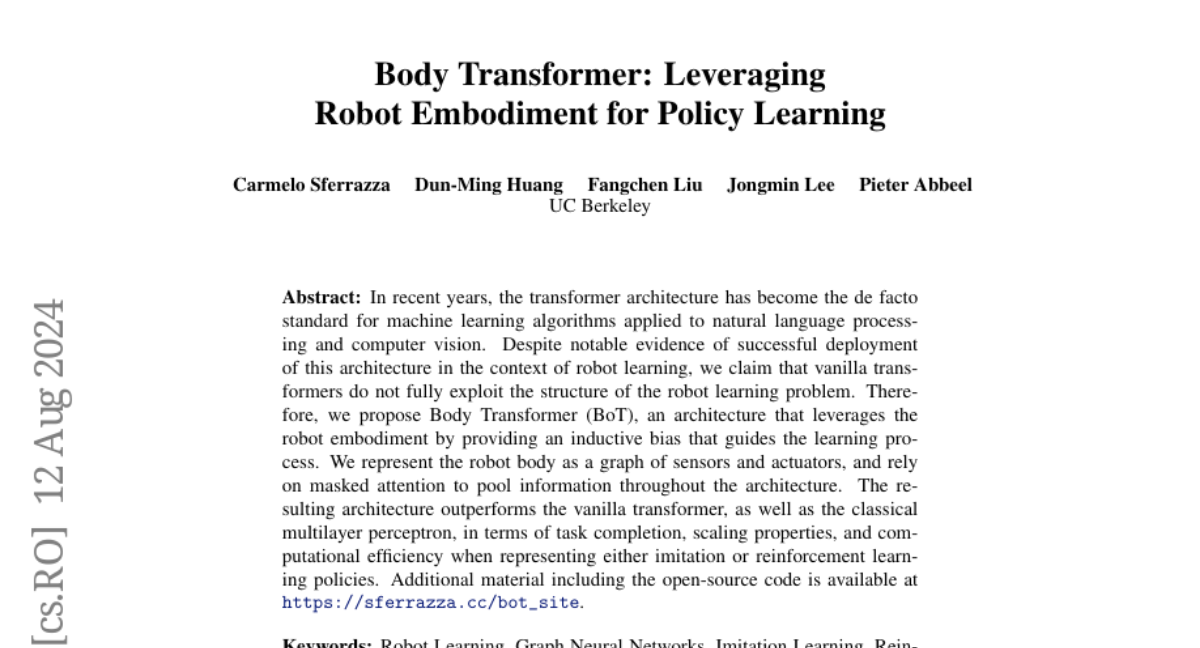Body Transformer: Leveraging Robot Embodiment for Policy Learning
Carmelo Sferrazza, Dun-Ming Huang, Fangchen Liu, Jongmin Lee, Pieter Abbeel
2024-08-13

Summary
This paper introduces the Body Transformer (BoT), a new architecture designed to improve how robots learn by taking advantage of their physical structure and capabilities.
What's the problem?
Traditional transformer models, which are popular in AI, do not fully utilize the unique aspects of robot learning. This means they might not perform as well as they could when teaching robots to complete tasks based on their physical abilities.
What's the solution?
The authors propose the Body Transformer, which represents a robot's body as a graph made up of its sensors and actuators. This approach helps the model learn more effectively by using a method called masked attention to gather information. The Body Transformer outperforms standard transformers and other models in completing tasks, being more efficient, and scaling better for different learning scenarios.
Why it matters?
This research is significant because it enhances the way robots can learn from their environments and improve their performance in various tasks. By better integrating a robot's physical characteristics into the learning process, we can create smarter robots that can adapt to real-world challenges more effectively.
Abstract
In recent years, the transformer architecture has become the de facto standard for machine learning algorithms applied to natural language processing and computer vision. Despite notable evidence of successful deployment of this architecture in the context of robot learning, we claim that vanilla transformers do not fully exploit the structure of the robot learning problem. Therefore, we propose Body Transformer (BoT), an architecture that leverages the robot embodiment by providing an inductive bias that guides the learning process. We represent the robot body as a graph of sensors and actuators, and rely on masked attention to pool information throughout the architecture. The resulting architecture outperforms the vanilla transformer, as well as the classical multilayer perceptron, in terms of task completion, scaling properties, and computational efficiency when representing either imitation or reinforcement learning policies. Additional material including the open-source code is available at https://sferrazza.cc/bot_site.